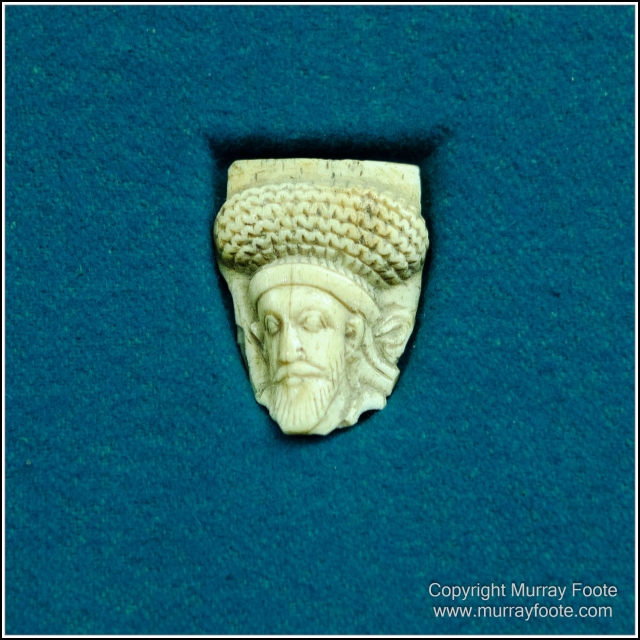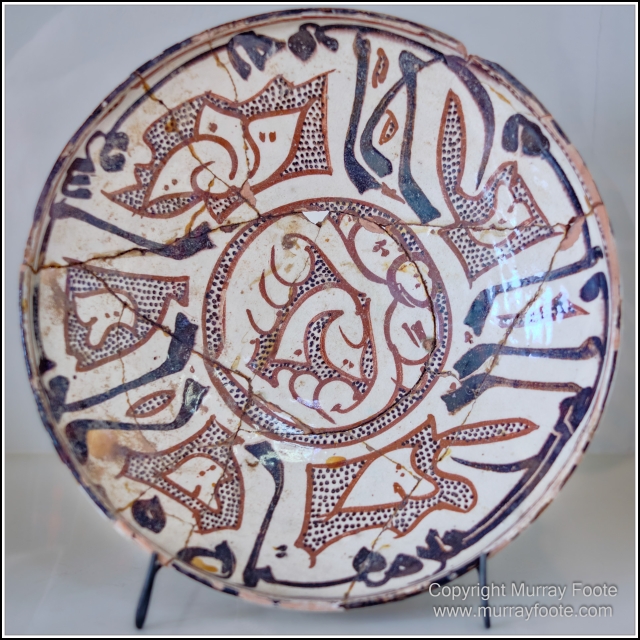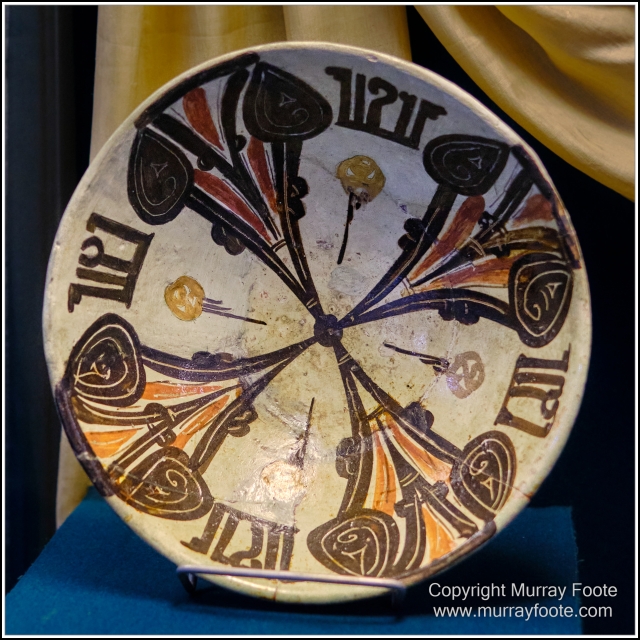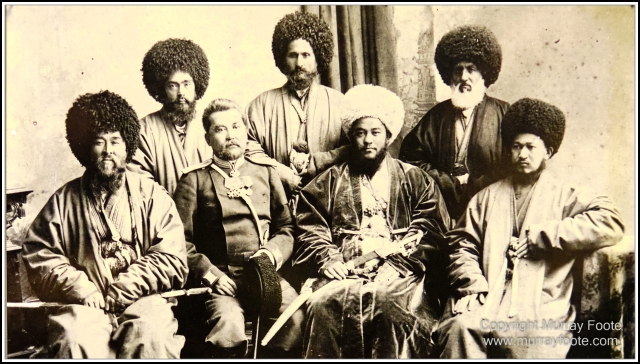Tashkent, Uzbekistan, 6 October 2018.
(Click on any image to see it in a larger size.)
.
On our last day in Tashkent we had some spare time before catching the plane and chose to visit the State Museum of Arts.
.
Reconstructed face of Neanderthal boy, Teshiktash Cave, Surkhandaraya region.
There was also a Neanderthal skull, 100,000 years old, from the same location.
Flint tools from 4th Millennium BC, Bukhara region.
.
Rock carvings, 3rd Millennium BC.
Jar handle in the form of a goat, 5th to 4th millennium BC.
This image and the next two are images of objects from the Amudarya Treasure. The originals are gold but these are replicas. In 1880, Captain F.C. Burton happened upon some Afghan merchants being attacked by bandits in the roads of what is now Northern Pakistan, and drove off the bandits. One of the merchants later showed Burton some items he had and Burton was most intrigued so purchased one. Burton later showed it to Major General Sir Alexander Cunningham, Director General of the Archaeological Survey of India, whose jaw hit the floor. Cunningham correctly identified it as a a fine example of Achæmenid Persian metalwork, from a period when the Achæmenid Emprire stretched from Egypt to the Indus Valley. Together with Sir Augustus Wollaston Franks, a curator of the British Museum, Cunningham scoured the markets of Pakistan and Northern India for several months and succeeded in purchasing 170 items from the hoard. They are now in the British Museum. The treasure had been found on the northern bank of the Amyu Darya River (the Oxus in Classical times), in what is now Tajikistan.
.
Priest, 5th to 4th millennium BC.
Bracelet with Griffins, , 5th to 4th millennium BC.
Ancient individual with Central Asian headgear (didn’t record the label for this one).
Coins of Greco-Bactrian Kingdom, 3rd to 2nd centuries BC.
.
Solar Deity, 1st to 2nd centuries AD, Fayaztepa, Old Termez, Southern Uzbekistan.
.
Buddha with monks, 1st to 3rd century AD.
Cover from reliquary vessel, 3rd to 4th centuries AD, Kara-Tepa, Old Termez, Southern Uzbekistan.
Hunting scene, mural painting, 7th century AD, Varakhsha, Ancient Sogdian city near Bukhara.
This is a copy of one of the world’s oldest Korans. We saw the original at the start of the trip in Barakh-khan Madrasah (in Tashkent). Photography is not permitted of the original one. In either case, it is huge. The original supposedly dates back to the 630s but testing indicates an early 8th to early 9th century date.
Glazed ceramic, Samarkand, 10th century.
Glazed ceramic, Samarkand, 11th century.
Ceramic dish, 10th to 12th Centuries.
Glazed ceramic, Samarkand, 12th century.
Armour of one of Timur’s soldiers, 14th to 15th centuries.
Glazed ceramic, Samarkand, 15th to 16th centuries.
Chain mail armour, shield and sword, Bukhara, 18th to 19th centuries.
.
Embassy from Khiva, in Tashkent, early 19th century.
.
Nineteenth century door from Khiva.
Nineteenth century door from Bukhara.
Nineteenth century door from Tashkent.
Military uniform, Bukhara, 1861-1865.
.
Siege of Samarkand, 1868.
Russia occupied Samarkand in 1868, which had been held by Bukhara. The Russian army then left to pursue the Bukharan army, leaving a small force behind to hold Samarkand. A combined Bukharan/ Kokand force then laid siege to Samarkand. This is what is shown here. The besiegers withdrew when the main Russian force returned.
.
“Bazaar in Samakand”, 1897.
“Bibikhonum Square”, Samarkand.
(See here for my post on its restored appearance).
“The street of a Central Asian city”, 1896.
Decorative embroidery, late nineteenth century, Tashkent.
Saddle, Namangan, Ferghana Valley, late 19th century.
.
Emir’s horse-blanket, 1911-1912.
Jewellery, early 20th century.
Gidjak and Rubab (traditional instruments), 1978.
.
That was the last post on Uzbekistan, apart from monochrome conversion posts to follow. Particular thanks to Advantour who organised a wonderful custom tour for us at a reasonable price. There have been 22 posts with 600 images and 15,000 words. I have updated the index of posts in the Trip Itinerary.



































Pingback: Uzbekistan, Crete, Spain and Oregon Itinerary « Murray Foote
Magnificent pieces.
LikeLiked by 1 person
All of these pieces are glorious! Thanks for sharing as always Murray! I’ll miss your Uzbek posts! Hopefully one day…. 😀
LikeLike